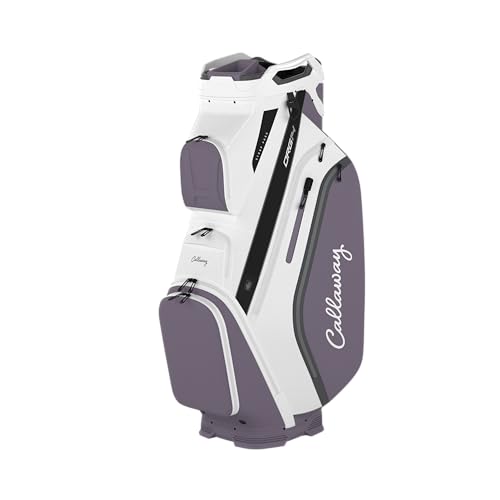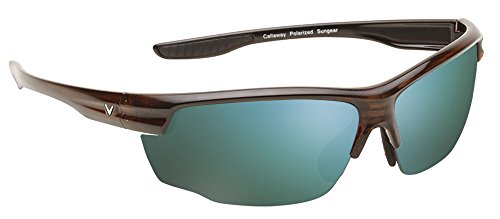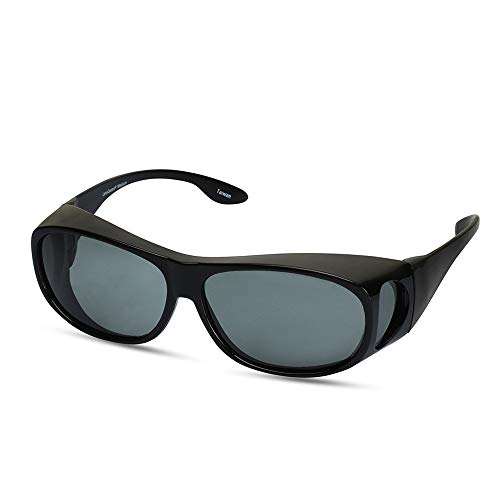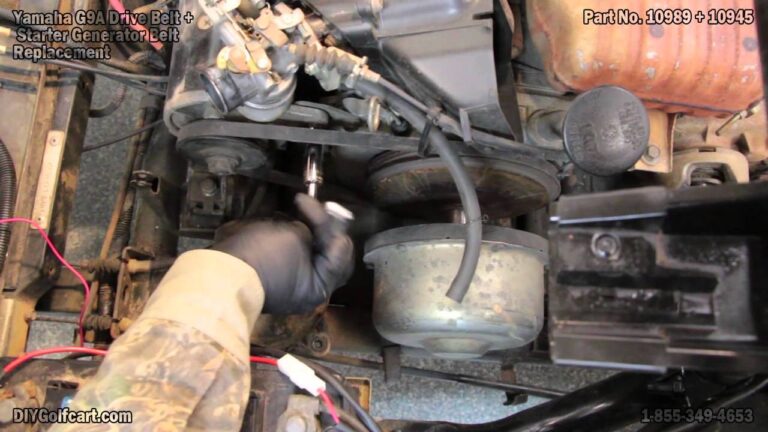A standard golf bag typically holds 14 clubs. A golf bag is an essential piece of equipment for any golfer, and it is designed to hold a specific number of clubs.
The number of clubs that can fit in a golf bag depends on its size and design. Most golf bags can accommodate up to 14 clubs, which is the maximum allowed under the rules of golf. These clubs include a variety of types, such as drivers, irons, wedges, and putters, each serving a different purpose on the golf course.
Golfers carefully select the combination of clubs they carry in their bag based on their playing style and the course conditions. We will explore the different types of golf clubs and their specific functions on the golf course.
Assessing Your Golf Bag Needs
Assessing your golf bag needs involves considering the number of clubs required for optimal performance on the course. By evaluating your playing style and skill level, you can determine the ideal number of clubs to carry in your golf bag.
Determine Your Skill Level And Typical Golf Course Environment
One of the first steps in assessing your golf bag needs is to consider your skill level and the typical environment of the golf courses you play on. Whether you’re a beginner or a seasoned golfer, this information is crucial in determining the number of clubs you’ll need and the right mix for your game.
If you’re new to the game, it’s best to start with a smaller set of clubs to practice and hone your skills. As your game progresses, you can gradually add more clubs to your bag. On the other hand, experienced players may have a wider range of shots in their arsenal and may require a larger variety of clubs to tackle different challenges on the course.
Additionally, the type of golf courses you typically play can influence the number of clubs you should carry. If you mostly play on shorter, executive courses, a smaller number of clubs may suffice. However, if you frequently find yourself on longer, championship-style courses with various hazards, you may need a more extensive selection to navigate through the different challenges.
Importance Of Club Variety For Different Game Scenarios
Having a variety of clubs in your bag is essential for addressing different game scenarios effectively. Each club is specifically designed to achieve a certain range and trajectory, allowing you to hit different shots with precision and control.
For example, a driver is typically used off the tee to achieve maximum distance, while fairway woods and hybrids are versatile options for long shots from the fairway or rough. Irons, ranging from lower to higher numbers, offer a wide range of distances and angles for approaching the green. Wedges, such as pitching, sand, and lob wedges, excel in short game situations, providing accuracy and control around the green.
Moreover, don’t forget the indispensable putter for those critical strokes on the green. Each club serves a unique purpose and having a well-balanced selection ensures you’ll be prepared for any situation you encounter during your round.
Balancing Between Club Types For A Versatile Bag
When it comes to building a versatile golf bag, balancing between different club types is crucial. Aim to include a mix of long-range, mid-range, and short-range clubs to cover all distances and game scenarios.
A good starting point is to have at least one driver, followed by a couple of fairway woods or hybrids to cover long-range shots. Then, include a set of irons that progressively increase in loft, allowing you to accurately approach the greens from different distances. Additionally, having a selection of wedges provides you with the necessary tools to handle various short-game situations.
It’s important to note that the number of clubs you can carry during a round is typically limited to 14, so choose wisely. Find a balance that suits your playing style, maximizes the versatility of your bag, and covers the distances and situations you encounter most frequently on the golf course.
Number Of Clubs In A Golf Bag
Golf is a sport of precision and skill, and having the right tools at your disposal can make all the difference on the green. One important aspect of a golfer’s arsenal is the number of clubs they carry in their golf bag. Whether you are a professional player or an amateur enthusiast, it is essential to understand the rules, recommendations, and strategy behind club count. In this article, we will delve into these aspects, exploring the typical composition for pros and amateurs and how the maximum limit affects strategic choices.
Rules And Recommendations For Club Count
When it comes to the number of clubs in a golf bag, there are specific regulations defined by the governing bodies such as the Royal and Ancient Golf Club of St. Andrews (R&A) and the United States Golf Association (USGA). According to the rules of golf, a player is allowed to carry a maximum of 14 clubs in their bag during a round.
While this 14-club limit might seem restrictive, it is important to note that different types of clubs serve different purposes on the course. These include drivers, fairway woods, hybrids, irons, wedges, and putters. Each club offers unique characteristics and playing capabilities, enabling golfers to tackle various situations they encounter during a round.
Although the limitations are clear, players have the freedom to choose which clubs they prefer to carry within the maximum count. This aspect creates room for personalization and customization of one’s golf bag, ensuring that it reflects the individual player’s game style and strengths.
Typical Golf Bag Composition For Pros And Amateurs
When we look at professional golfers, their bag composition tends to differ from that of amateurs. Professionals often carry a wide array of clubs to cater to the intricacies of the courses they play and to capitalize on their specific strengths. Their bags may include multiple fairway woods, long irons, and even additional wedges to adapt to various shot-making demands.
On the other hand, amateur golfers, including recreational players and weekend warriors, might opt for a more simplified approach. Generally, amateurs tend to prioritize forgiveness, ease of use, and consistency. This often leads to a preference for hybrids over hard-to-hit long irons and a reliance on higher-lofted fairway woods instead of low-lofted clubs.
As amateurs typically play on courses that are less challenging than those on professional tours, their club selection may be tailored accordingly. The aim is to optimize their performance, boost confidence, and enjoy the game to its fullest.
How The Maximum Limit Affects Strategy And Choices
The 14-club maximum limit in golf presents a unique challenge and strategic consideration for players. With limited slots in the bag, each club choice must be precise and deliberate to cover a wide range of distances and shot types effectively.
Strategically, players need to strike a balance between distance, accuracy, versatility, and their individual strengths. This becomes particularly crucial when deciding which clubs to include and exclude. For instance, a golfer may choose to carry an extra wedge for shot versatility around the green, sacrificing another club that sees limited usage or has overlapping capabilities.
Moreover, the maximum limit forces golfers to assess their game and identify areas of improvement. It encourages them to refine their skills to minimize club dependency and instead rely on shotmaking proficiency. This approach enhances overall performance and helps players become more well-rounded and versatile on the course.
In conclusion, understanding the rules, recommendations, and strategies behind the number of clubs in a golf bag is vital for every player. It allows golfers to optimize their game, adapt to various course conditions, and showcase their skills to the fullest. Whether you are a professional honing your craft or an amateur looking to enhance your playing experience, the composition of your golf bag plays a significant role in shaping your performance on the green.
Maximizing Your Golfing Arsenal
When it comes to golf, having the right combination of clubs in your bag can make all the difference in your game. Maximizing your golfing arsenal means that you are equipped with the right tools to tackle any shot on the course. In this article, we will explore the different types of clubs available to golfers and how to select the right mix of woods, irons, and putters. We will also discuss when to opt for hybrids over traditional irons or fairway woods, as well as the importance of specialty clubs and situational utility.
Selecting The Right Mix Of Woods, Irons, And Putters
When it comes to selecting the right mix of clubs for your golf bag, it’s important to consider the varying distances and shots you will encounter on the course. In general, a standard set of clubs consists of a driver, fairway woods, irons, wedges, and a putter.
- Driver: The driver is often the club used to tee off on longer holes. This is the club that provides maximum distance, giving you the power to start your hole off on the right foot. Generally, a driver has the lowest loft among all the woods, which allows for the ball to be hit on a lower trajectory and cover more ground.
- Fairway woods: Fairway woods are typically used when you need to cover a long distance from the fairway but still desire accuracy. They have a higher loft compared to the driver, making it easier to get the ball in the air and maintain control. Consider including a few fairway woods with different lofts to cover various distances.
- Irons: Irons are versatile clubs that come in various numbers (usually 3-9) and different lofts. They offer more control and precision than woods. Ideally, a golfer should have a mix of both cavity back and blade irons, chosen based on individual playing style and skill level.
- Wedges: Wedges are designed to help you hit shots with a higher trajectory and more spin. They are crucial for shots near the green and from bunkers. A typical set may include a pitching wedge, sand wedge, and lob wedge, each with its own loft and purpose.
- Putter: The putter is perhaps the most important club in your bag. It is used on the greens to roll the ball into the hole. Putters come in various shapes and designs, each offering a different feel and alignment aid. Find one that suits your putting stroke and preferences.
When To Opt For Hybrids Over Traditional Irons Or Fairway Woods
Hybrids, also known as rescue clubs, offer a blend of the best characteristics of both irons and woods. They are designed to replace hard-to-hit long irons or fairway woods that may be challenging for some golfers.
Here are a few cases where opting for hybrids makes sense:
- Difficulty with long irons: If you find it challenging to hit consistent shots with long irons (3-5 irons), hybrids can provide a more forgiving and easier-to-hit alternative. The wider sole and lower center of gravity of hybrids make it easier to get the ball airborne.
- Struggling with fairway woods: Fairway woods can be challenging to hit off the ground for some golfers. Hybrids offer a similar distance while providing more forgiveness and accuracy as they are easier to hit off the fairway or rough.
- Gap-filling: Hybrids can also fill the yardage gap between fairway woods and irons. For example, if you have difficulty hitting a 3-wood consistently but find a 3-iron too short, a hybrid can provide a suitable option.
Specialty Clubs And Situational Utility
In addition to the essential clubs, many golfers choose to carry specialty clubs to handle specific situations on the course. These clubs can add versatility to your game and help you navigate challenging shots.
Here are a few examples of specialty clubs and their situational utility:
| Club Type | Situational Utility |
|---|---|
| Driving Iron: | Provides greater control and accuracy off the tee or fairway on shorter par-4s or when a more controlled shot is required. |
| Hybrid Iron-Wood: | Combines the distance of a fairway wood with the accuracy and control of an iron, making it useful for longer approach shots. |
| Utility Wedge: | Offering more loft than a pitching wedge but less than a sand wedge, utility wedges help golfers handle a variety of shots around the greens. |
| Chipper: | Designed to simplify chip shots around the green, the chipper can be an excellent tool for golfers who struggle with traditional chip shots using a wedge or putter. |
By including specialty clubs that suit your playing style and addressing situational needs, you can ensure that you have the right club for any shot that comes your way.
Tailoring Club Selection To Your Golf Style
When it comes to playing golf, having the right clubs in your bag can make all the difference in your game. Each golfer has their own unique style, swing speed, and distance needs, which means that club selection should be personalized to suit individual preferences. By tailoring your club selection to your golf style, you can optimize your game and improve your overall performance on the course.
Matching Clubs To Swing Speed And Distance Needs
A key factor in club selection is matching the clubs to your swing speed and distance needs. This ensures that you can generate the optimal amount of power and control with each swing. If your swing speed is slower, you may benefit from using clubs with more loft to help get more height and distance. On the other hand, if you have a faster swing speed, clubs with less loft may be more suitable to keep the ball from soaring too high.
To determine the best clubs for your swing speed and distance needs, consider consulting with a golf professional or using a launch monitor. These tools can provide valuable data on your swing speed, launch angle, and ball speed, helping you make informed decisions about which clubs to include in your bag.
Importance Of Club Fitting For Individual Play Styles
Another crucial aspect of club selection is club fitting. Club fitting involves analyzing your swing, body measurements, and play style to find clubs that perfectly suit your needs. A properly fitted set of clubs can enhance your performance by improving accuracy, distance, and overall feel.
During a club fitting session, a golf professional will assess your swing, grip, stance, and other key factors to identify the ideal club specifications for your game. This may include adjustments to club length, lie angle, shaft flex, and grip size. By ensuring that your clubs are custom-fit to your body and play style, you can unlock your full potential on the course.
Weighing The Benefits Of Carrying Extra Wedges Or Utility Clubs
When it comes to club selection, one common question is whether to include extra wedges or utility clubs in your bag. While the number of clubs you carry ultimately depends on personal preference, there are certain factors to consider.
- Increased versatility around the green
- Ability to hit a variety of shots with different degrees of loft
- Improved chances of getting up and down from challenging lies
- Additional options for long-distance shots
- Ability to replace certain long irons or fairway woods
- Enhanced accuracy and control on approach shots
When deciding whether to carry extra wedges or utility clubs, it’s recommended to assess your own strengths and weaknesses on the course. Consider your typical shot distances, the types of shots you frequently encounter, and your comfort level with different clubs. This will help you make an informed decision that aligns with your golf style and maximizes your scoring potential.
Maintaining The Perfect Club Number
In the world of golf, the number of clubs in your bag is a crucial component that can greatly impact your game. Finding the perfect balance of clubs allows you to navigate the course with confidence, ensuring you are prepared for any situation that may arise. To maintain the perfect club number, it is important to regularly evaluate your club usage and effectiveness, adapt your club set for different courses, and strategically swap clubs based on course layout and conditions.
Regularly Evaluating Your Club Usage And Effectiveness
To ensure you are utilizing the optimal number of clubs, it is essential to regularly evaluate your club usage and effectiveness. This involves analyzing your shots, distances, and overall performance with each club. Consider keeping a record of your rounds, noting which clubs you used, the distances you achieved, and the accuracy of your shots.
By reviewing this data, you can identify if there are any clubs in your bag that you consistently underutilize or struggle with. If you find that certain clubs are rarely used or consistently lead to poor results, they may not be necessary for your game and could be replaced with more suitable options.
Tips For Adapting Your Club Set For Different Courses
- Consider the length and layout of the course: Longer courses typically require a greater variety of clubs to handle different distances. Evaluate the par 3s, par 4s, and par 5s to determine the ideal mix of irons, hybrids, and fairway woods.
- Assess the greens and hazards: Courses with challenging greens or numerous hazards may require specialized clubs like wedges or rescue clubs to navigate tight spots or get out of trouble.
- Factor in weather conditions: Wind, rain, and temperature can significantly impact your shots. Adjust your club selection accordingly. For example, a strong headwind may require a stronger club or altering your strategy to achieve optimal distance.
- Consider your personal playing style: Be honest about your strengths and weaknesses. If you struggle with long irons, consider replacing them with hybrids that offer similar distances but with more forgiveness.
Strategies For Swapping Clubs Based On Course Layout And Conditions
Swapping clubs strategically based on course layout and conditions helps ensure you have the right tools for each shot. Consider the following strategies:
- Research the course: Familiarize yourself with the characteristics of the course you’ll be playing. Knowing where the potential challenges lie can help you determine which clubs to prioritize.
- Use interchangeable clubs: Golfers often have multiple clubs in their bag that serve similar purposes. For example, you may have both a 3-wood and a 5-wood. Assess the conditions and select the club that aligns better with the current situation.
- Anticipate the necessary shots: Before teeing off, mentally map out the shots you may need to execute throughout the round. This allows you to plan which clubs will be most useful in different scenarios.
- Adjust for poor weather conditions: In unfavorable weather, such as heavy rain or high winds, it may be necessary to swap to more forgiving clubs or focus on keeping the ball low to prevent it from being severely affected by the elements.
By following these strategies, you can ensure you are making informed decisions when swapping clubs and maximize your chances of success on the course.
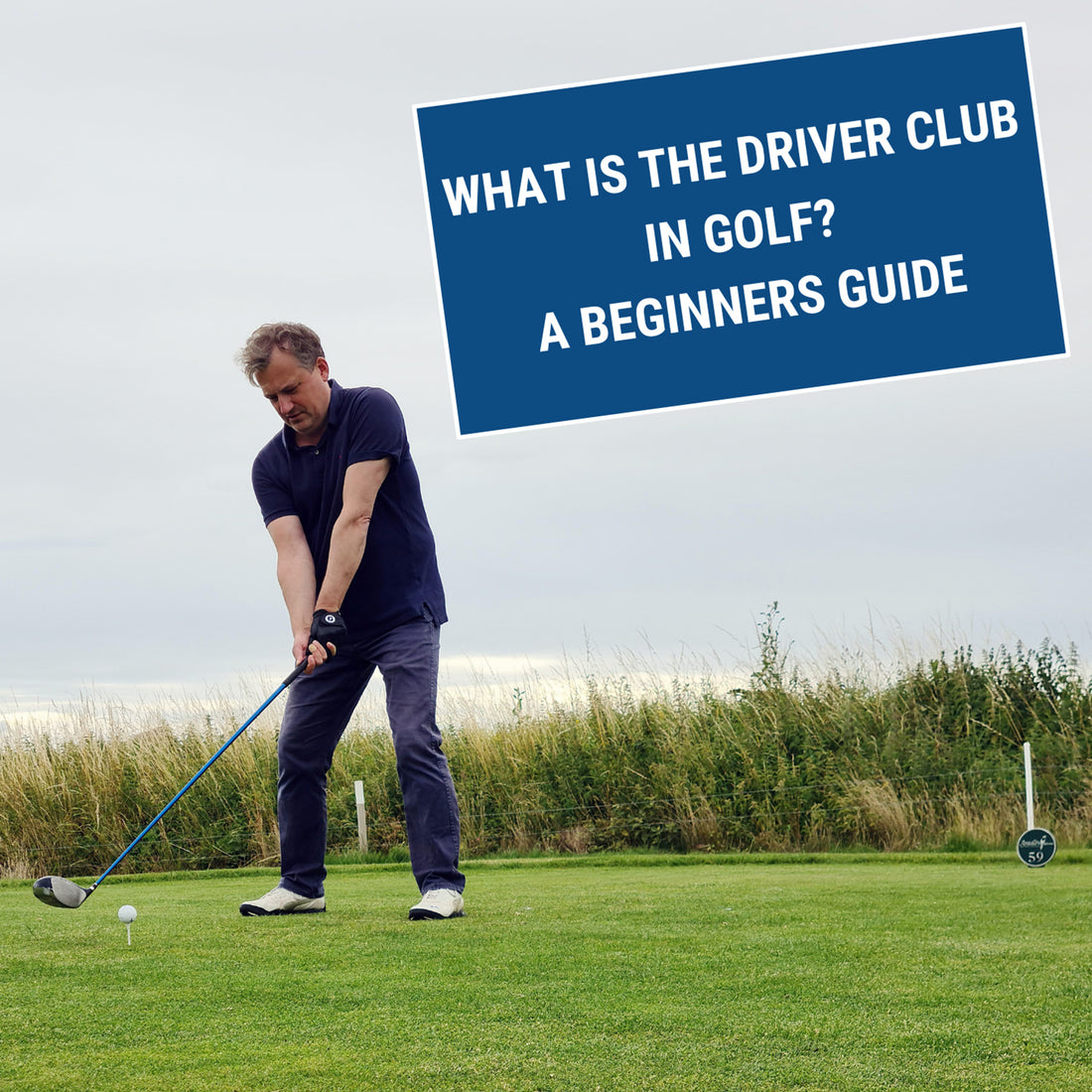
Credit: www.moresports.com
Frequently Asked Questions On Number Of Clubs In A Golf Bag
Can I Carry 15 Clubs?
Yes, you are allowed to carry 15 clubs while playing golf.
How Many Clubs Can You Have In Your Bag 2023?
You can have up to 14 clubs in your bag in 2023 according to golf rules.
How Many Clubs Are Allowed In A Pga Bag?
A PGA bag is allowed to have a maximum of 14 clubs.
How Many Clubs Should A High Handicapper Carry?
A high handicapper should carry around 14 clubs in their bag. These clubs should include a driver, fairway woods, hybrids, irons, wedges, and a putter. Having a variety of clubs will help a high handicapper navigate different shots on the course and improve their game.
Conclusion
To wrap things up, it’s clear that the number of clubs in a golf bag plays a crucial role in a player’s performance on the course. Each club serves a specific purpose, allowing golfers to navigate various terrains and execute a wide range of shots.
By carefully selecting the right combination of clubs, golfers can optimize their game and improve their overall score. With this information in mind, it’s important for golfers to assess their playing style and skill level to determine the ideal number of clubs to carry in their bag.
Remember, choosing the right clubs can be a game-changer on the greens. So, don’t underestimate the power of a well-equipped golf bag and its impact on your game.

